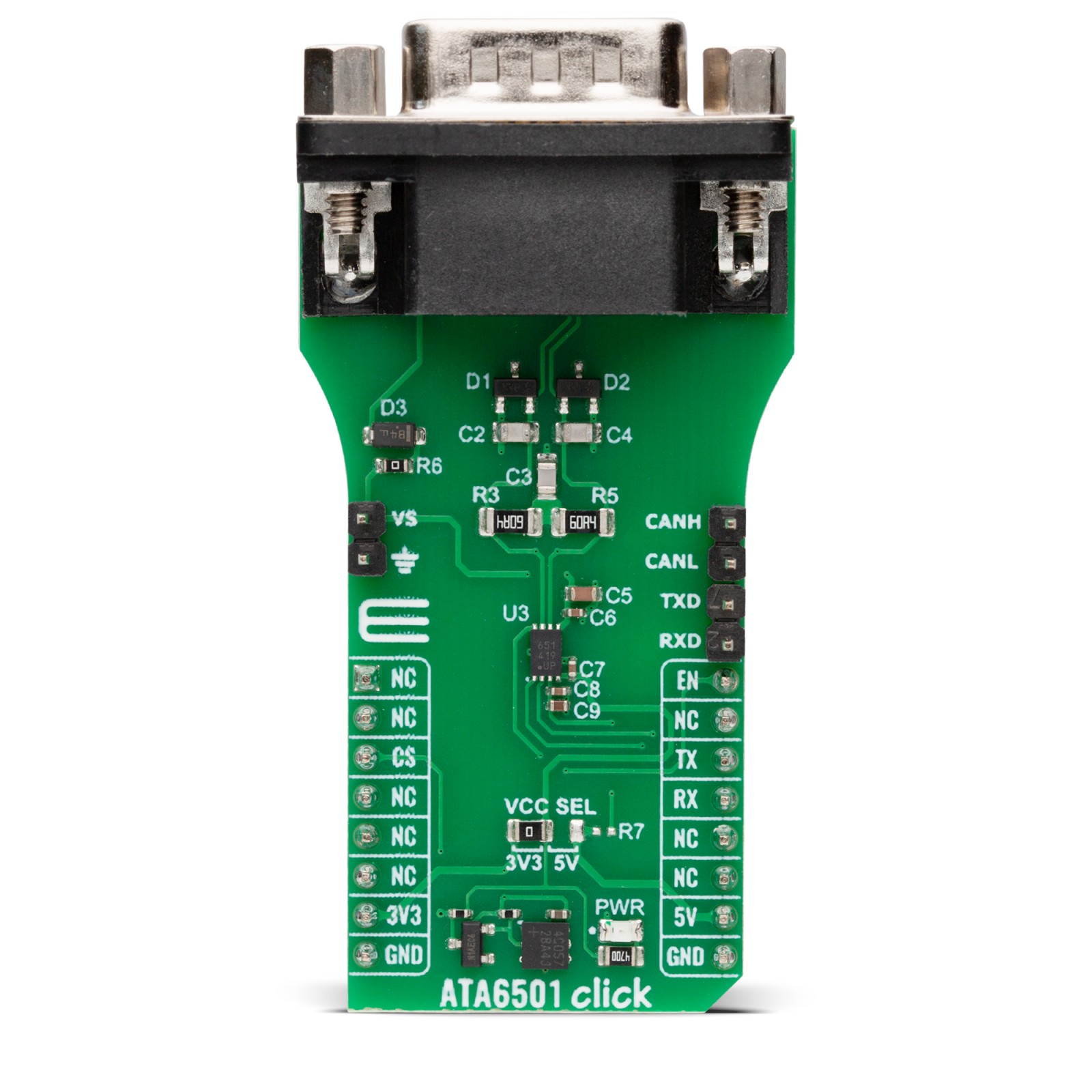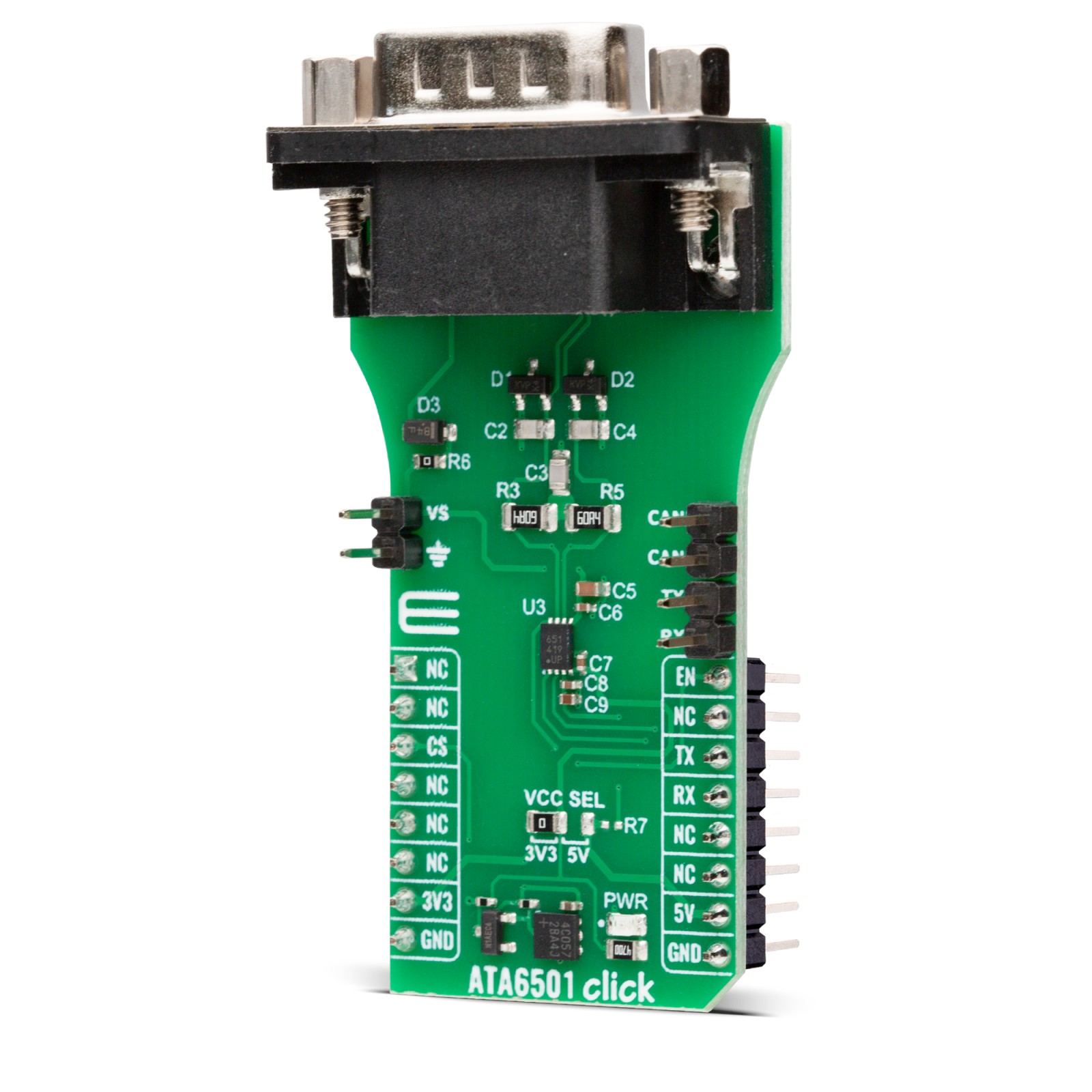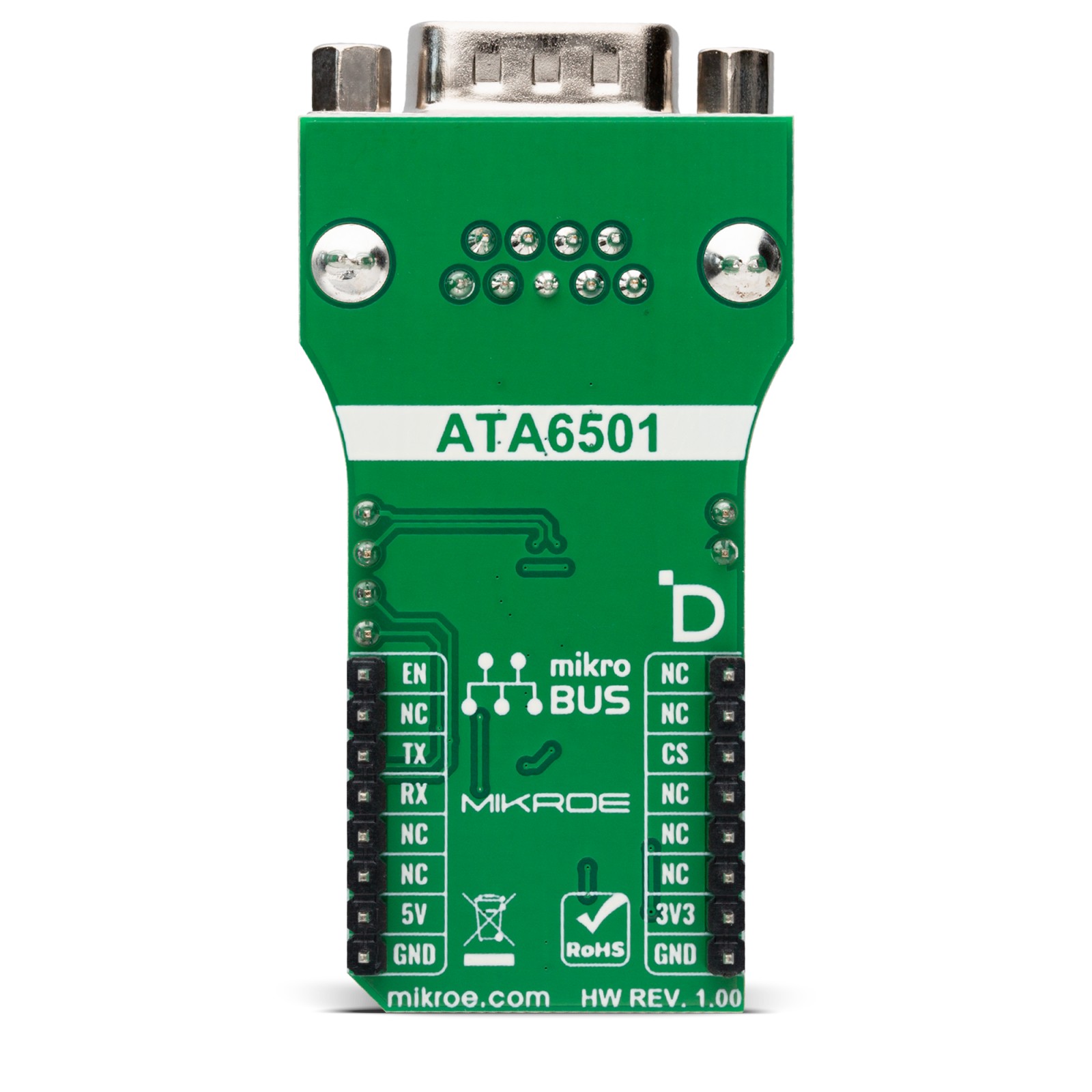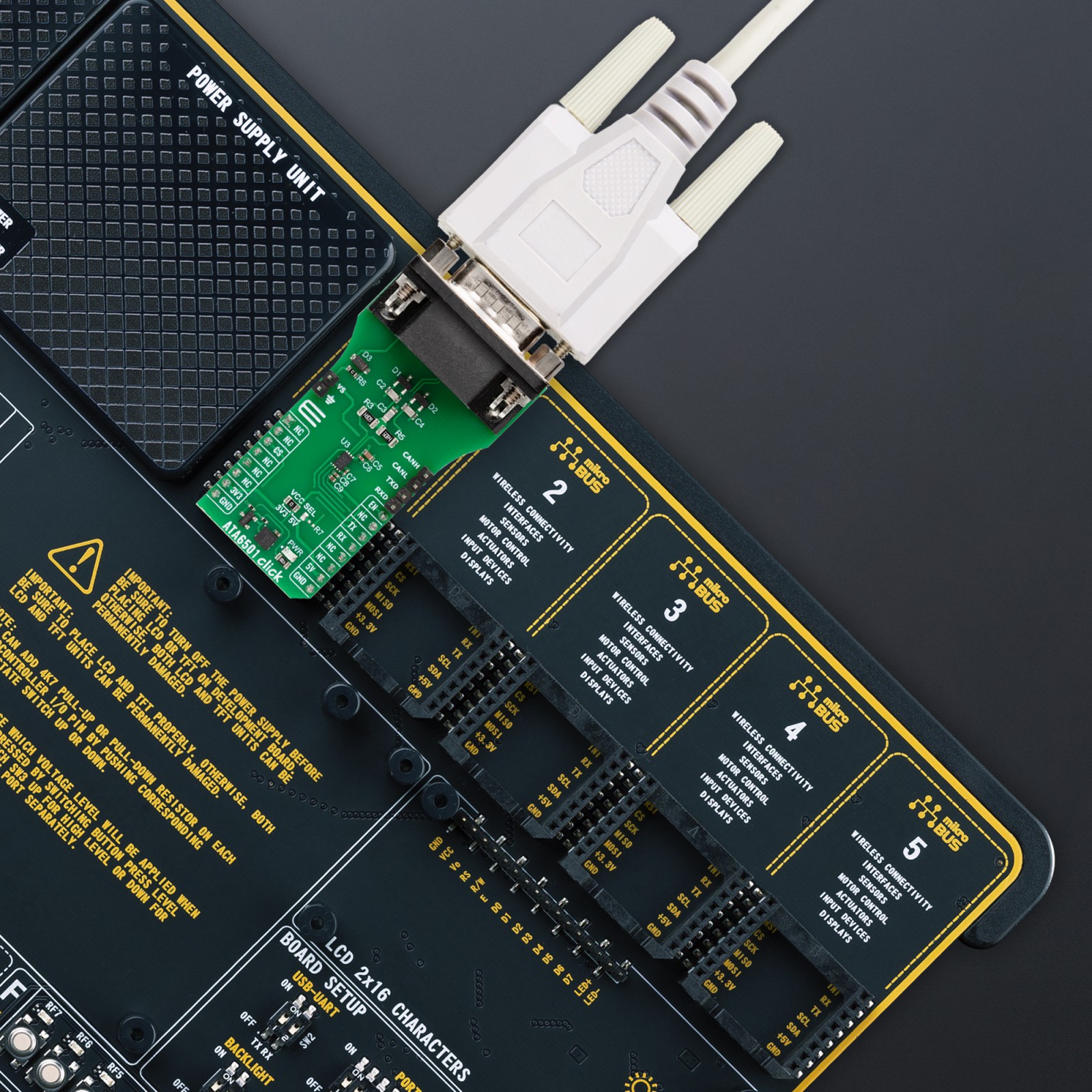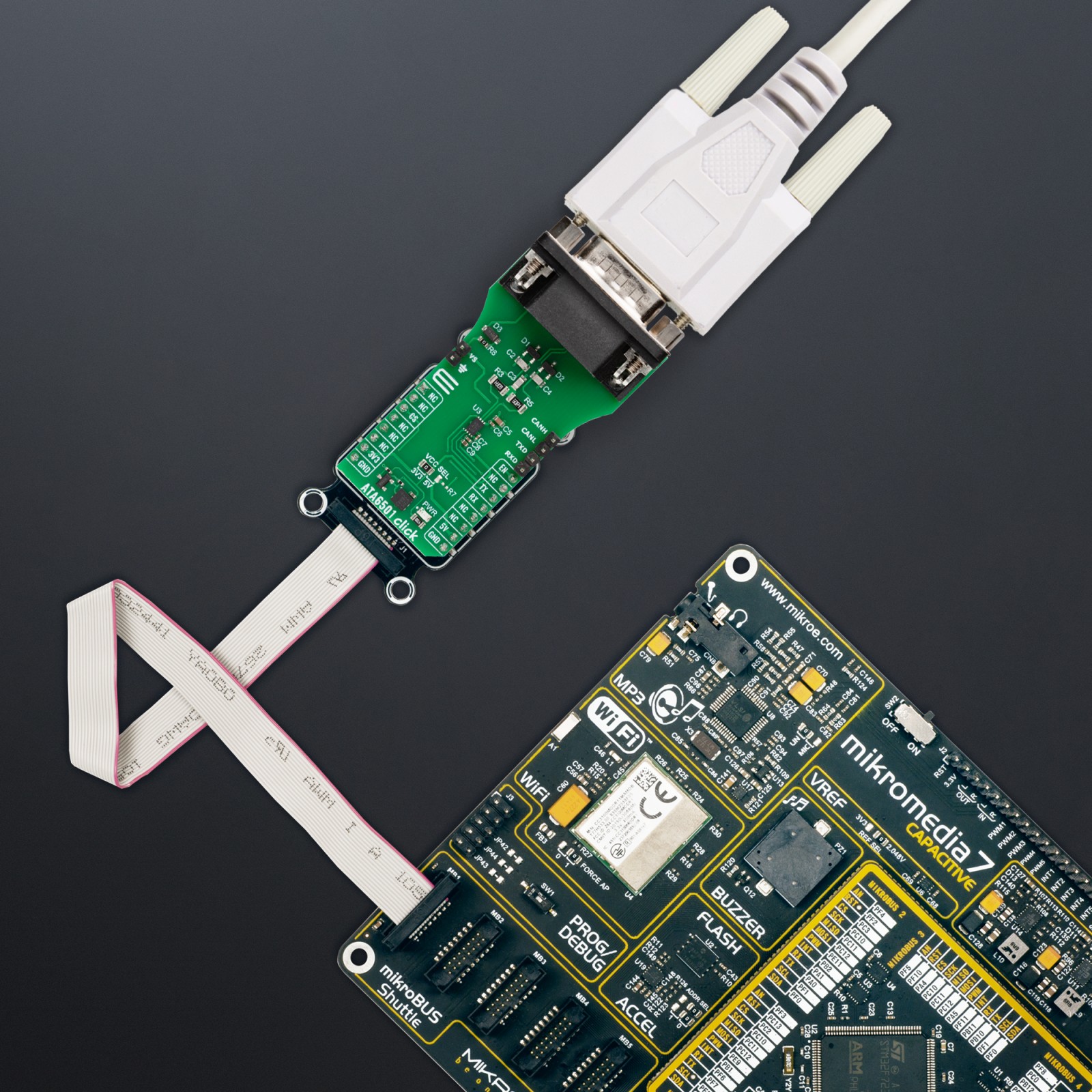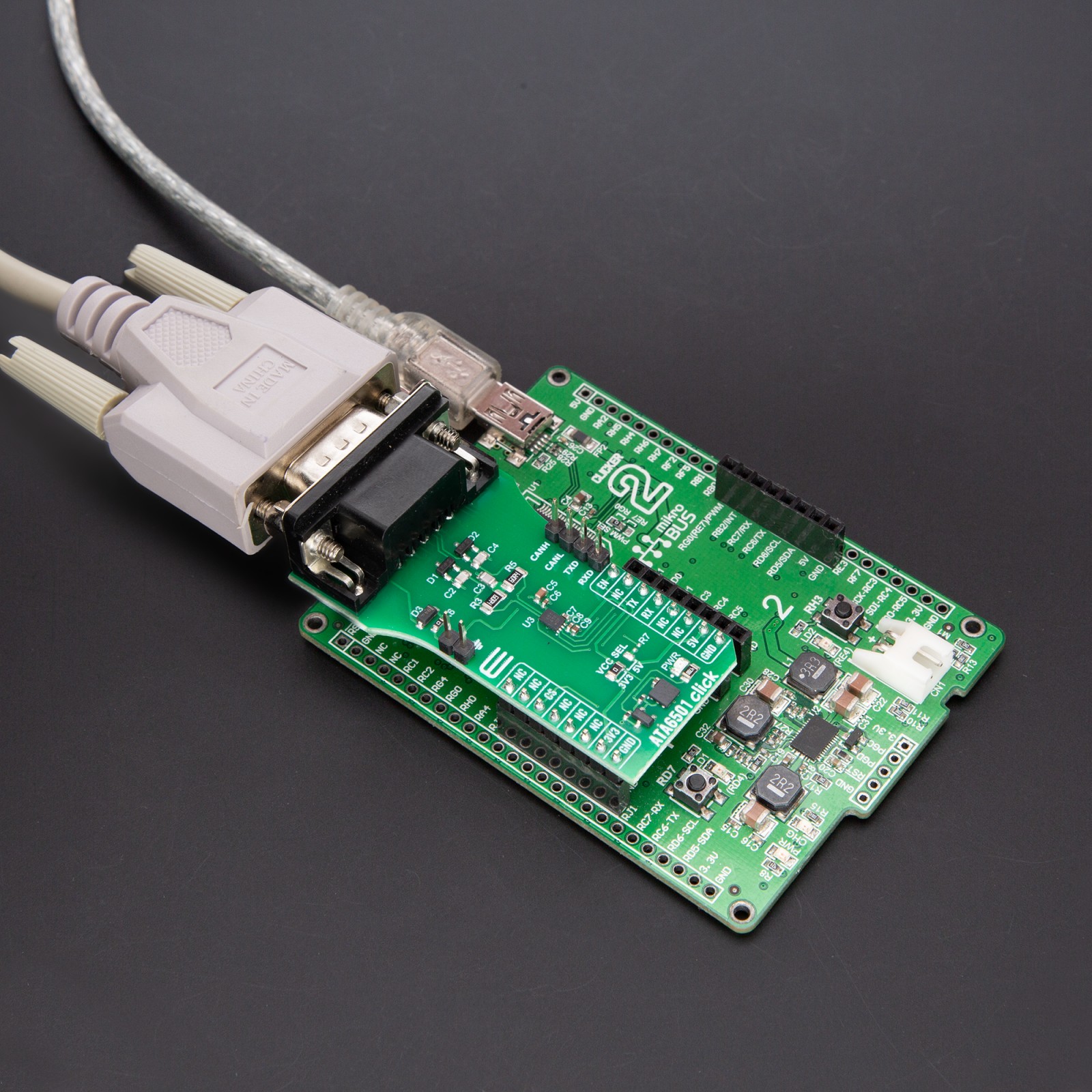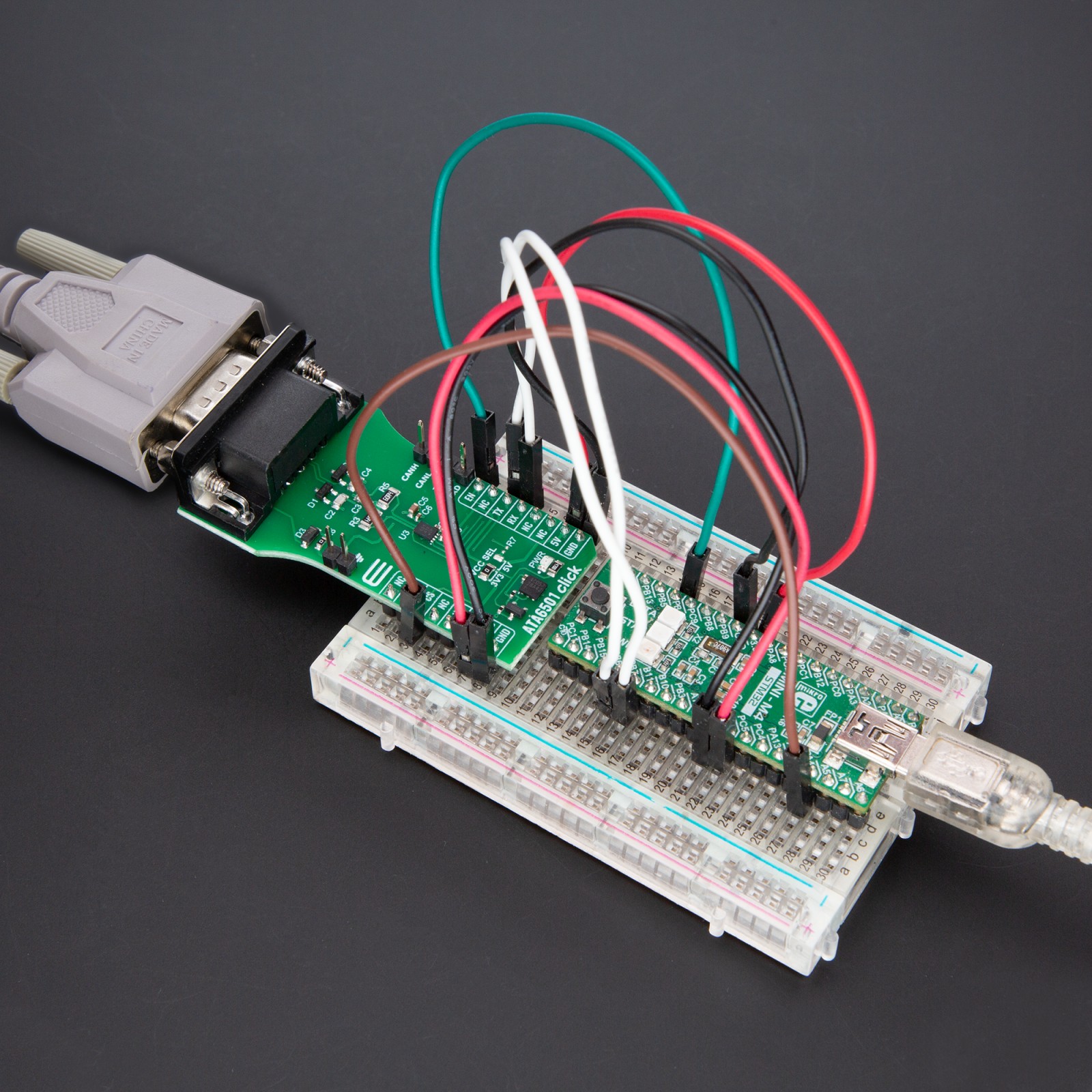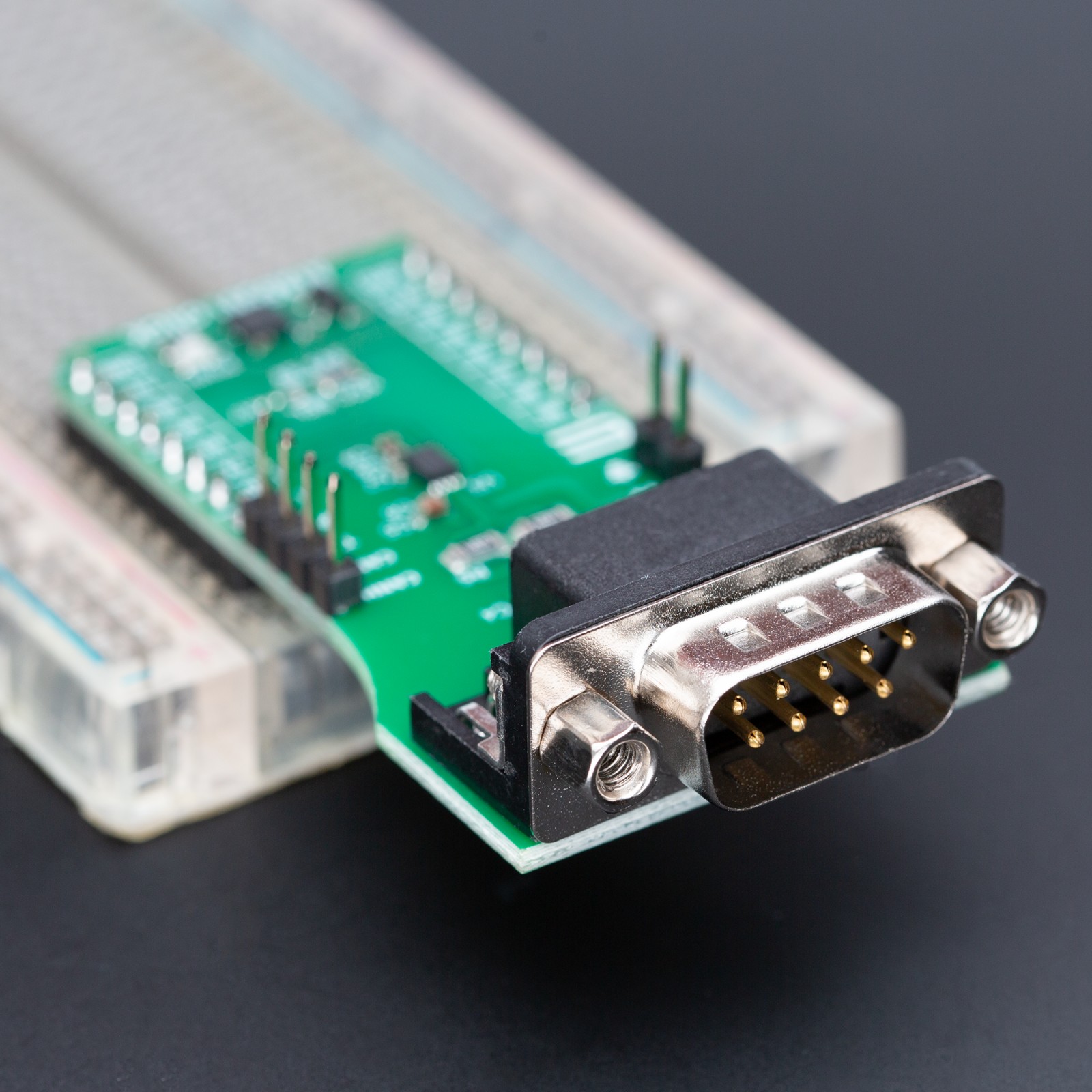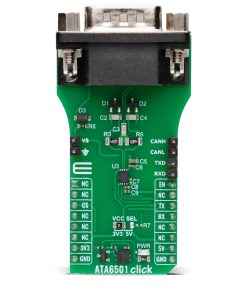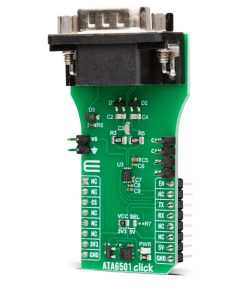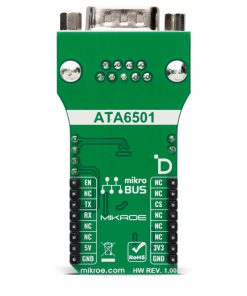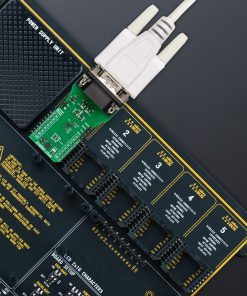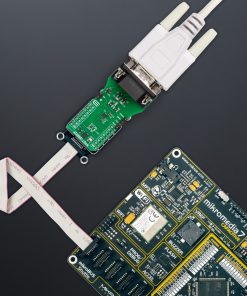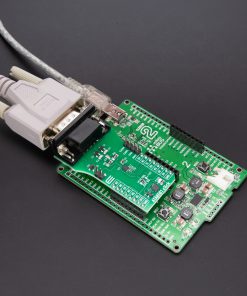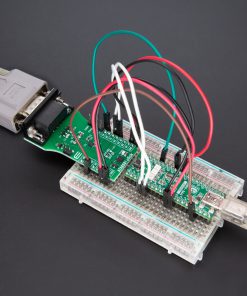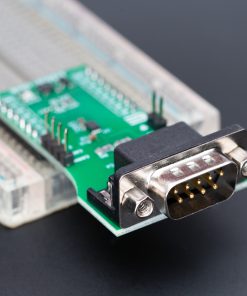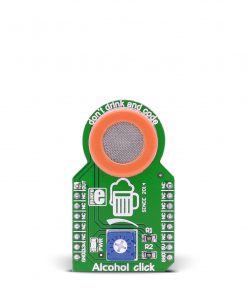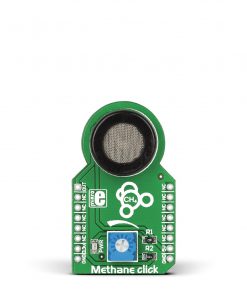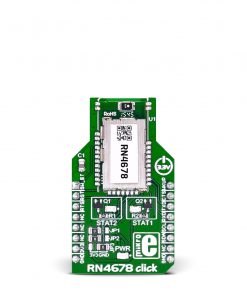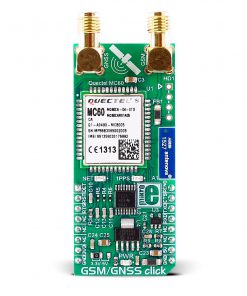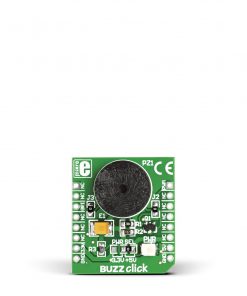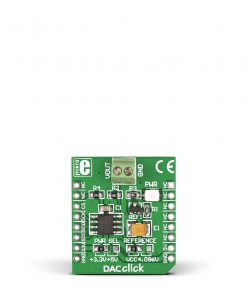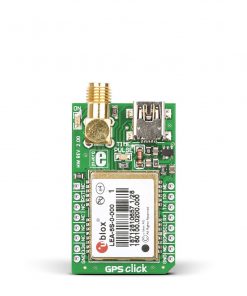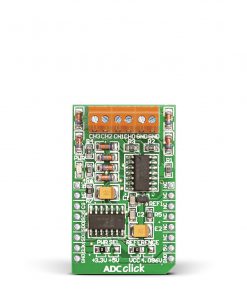ATA6501 Click
R350.00 ex. VAT
ATA6501 Click is a compact add-on board for high-speed CAN FD communication in automotive and industrial applications. This board features the ATA6501, a fully integrated CAN FD System Basis Chip (SBC) from Microchip, meeting Grade 0 AEC-Q100 standards. It supports both Classical CAN and CAN FD protocols with data rates up to 5Mbit/s and features an integrated 5V/150mA voltage regulator, reverse battery protection, and advanced fail-safe mechanisms. The ATA6501 communicates with the host MCU via a UART interface, including a standard DB-9 connector for CAN bus integration. Additional features include multiple operating modes, undervoltage detection, and compatibility with 3.3V or 5V logic levels, ensuring flexibility and reliability. ATA6501 Click is ideal for applications such as body electronics, infotainment systems, powertrains, ADAS, photovoltaic systems, and more, where robust and efficient CAN FD communication is essential.
ATA6501 Click is fully compatible with the mikroBUS™ socket and can be used on any host system supporting the mikroBUS™ standard. It comes with the mikroSDK open-source libraries, offering unparalleled flexibility for evaluation and customization. What sets this Click board™ apart is the groundbreaking ClickID feature, enabling your host system to seamlessly and automatically detect and identify this add-on board.
Stock: Lead-time applicable.
| 5+ | R332.50 |
| 10+ | R315.00 |
| 15+ | R297.50 |
| 20+ | R286.30 |

